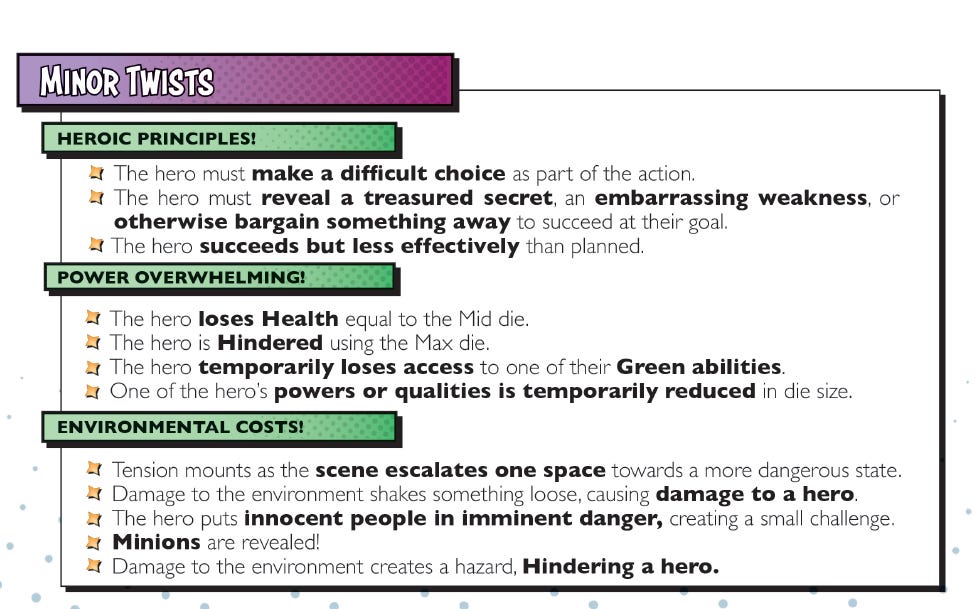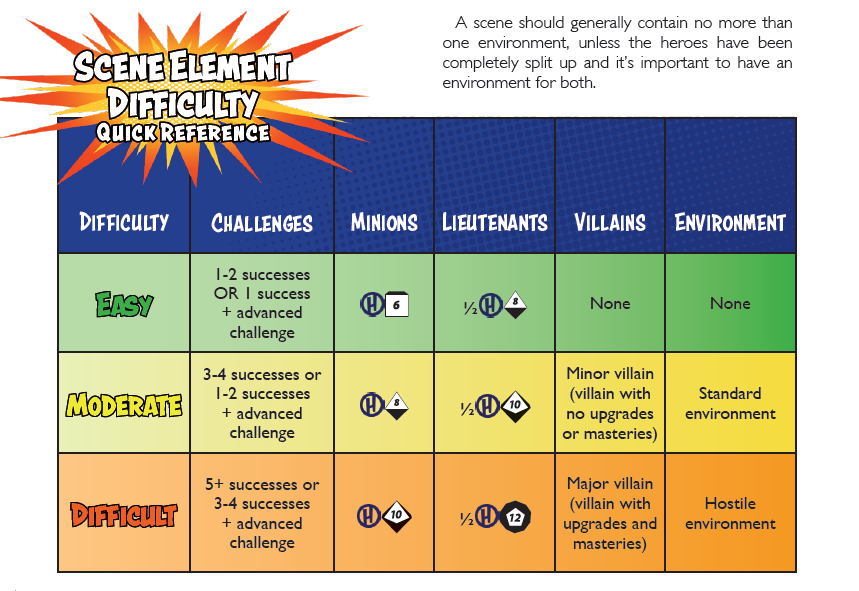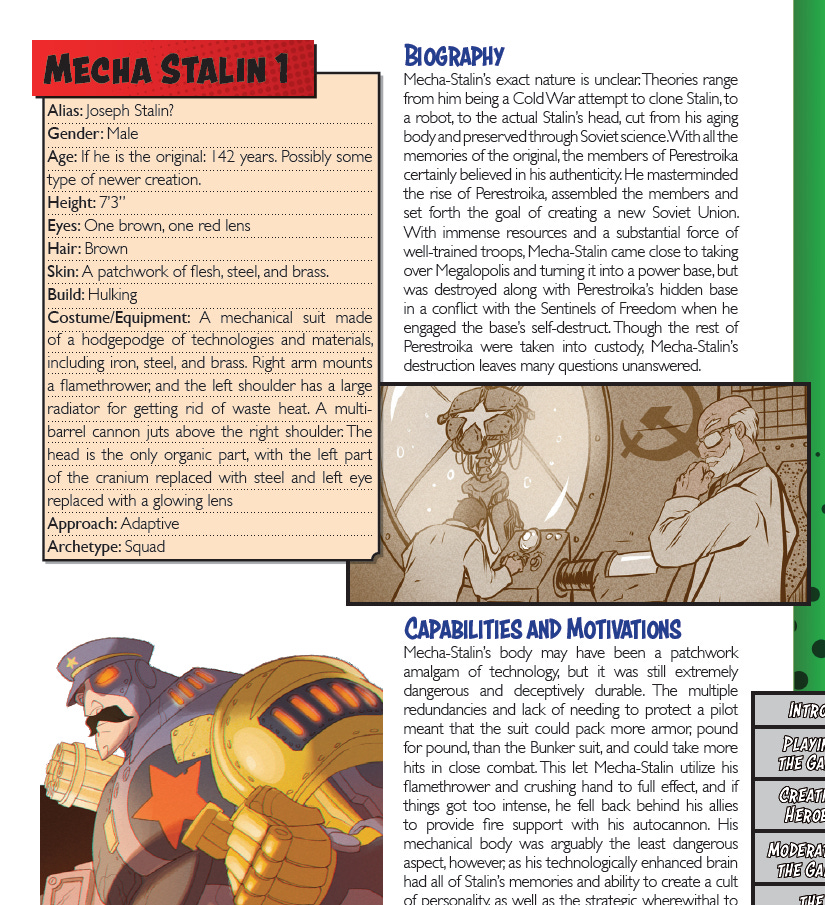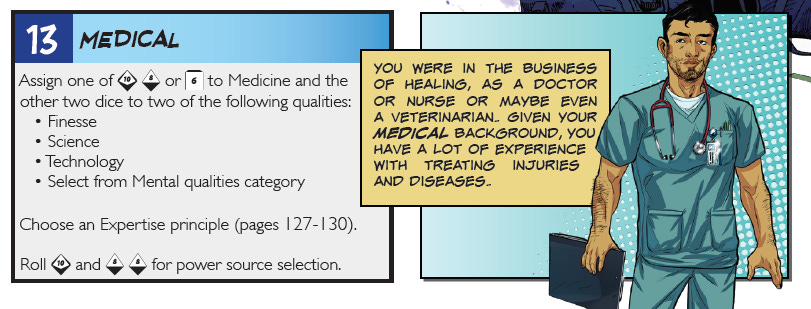Sentinel Comics RPG (Part 2)
Color-coded intense action and excellence in pacing
This is the second part and conclusion to our Sentinel Comics critical analysis. You can find part one here
5. Disassemble Engine
Games have a flow, which, when you hit, the game pretty much runs itself. It is extremely satisfying. After examining the interactions of game elements, we single out the most important - the one that sets the pace of sessions, or even campaigns. We focus on how that engine works, how it makes the game move along, and what to do to make it do what you want to do - and how to keep it running clean.
LudoThis is easy. GYRO. The engine that drives the game is GYRO.
The track of Green Yellow Red Out, drives the pacing of scenes and in-between scenes. Everything is on a timer, which ultimately drives for more dynamic actions scenes from an end of the issue (session) to the other.
The long arm of the engine is damage. Health recovery is rare, requiring specific powers accessible only to certain archetypes or dedicated scenes. For the most part, damage you get stays there.
While this means you are closer to getting Out (which would take you out of the current scene, limiting your capacity to participate and requiring a scene to recover), damage makes you proceed through the Green, Yellow, and Red zones.
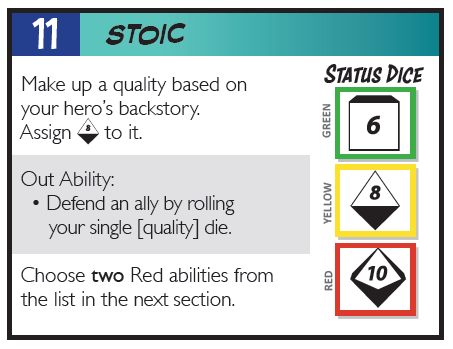
You start in the Green Zone, using your Green die. You take damage, then dive into the Yellow zone, then use Yellow die, and so on. This is cool, but not that interesting. Come on, this cannot move an engine. No, the thing that matters for damage is that your powers are Zone coded too.
When you are in the Yellow Zone, you can use Yellow powers, which are not only more powerful than Green zone ones, they also let you do more things with an given action. This means as you take damage over a session, the faster you wrap up encounters.
What about the Red zone? Red zone powers feel like ultimates. Real outstanding bigger-than-life deals, where a single action can drastically change an encounter. The moment you get there, things get solved fast - one way or another.
The same framework is true within a given scene. Just like characters, scenes have their own Green, Yellow and Red zones. Whenever everyone takes their turn, the scene tracker advances one zone. Since the closest to Red between health track and scene tracker dictate which powers can be used, as a scene progresses, you can use your more dramatic powers.
By monitoring damage, by creating opportunities to heal, and by adjusting a scene tracker, you can make GYRO engine spin the way you want on the fly.
BradThis engine drives the entire game and it is very customizable, with the game going over how adding extra levels to the scene tracker can affect difficulty. It definitely adds tension to a scene as it ratchets towards its inevitable conclusion. This also provides a fun back and forth as a player, where you are going to want to get access to your big whacky powers, but by doing so you are plunging headfirst into a more dangerous scene.
LudoA sub engine I want to talk about it the Overcome, Challenge and Twist challenge.
This is a much simpler engine that produces satisfactory results by itself but also feeds back into the GYRO engine.
So, a Challenge is anything that you can’t Attack or Defend. Things you solve by saving a bystander, holding a collapsing building, stopping a train with your spider glutes, hacking the world, etc. are covered by Overcome. Now the thing is, Overcomes don’t have binary outcomes: you fail very rarely, while more often than not being able to succeed with a Minor or Major Twist.
When this sub-engine is running well, you present a Challenge, they must meet it, taking actions to Overcome, and then it changes the situation of the current scene and maybe even the rest of the session.
6. Essentials For Session One
So, you got this game; you going to play it, but you don’t have the time to read everything. Or even worse, you have read it and now it is all jumbled together. Here we break down the things that you absolutely want to get right and/or hit during your first session, so you get the feeling of what makes this game stand out from similar art.
LudoBecause the engine works so well, you will hit the goals of the game by using the GYRO system. But since that connects to so much stuff, the GYRO may not be the best place to start.
You can already get the feeling of being a hero and playing different heroes by using the Challenge mechanics. Start with a few simple Challenges (a single Overcome to succeed), maybe build up with more complex Challenges. Then, apply Twists - especially those related to heroic Principles - and build up to scenes.
Once you give everyone a taste of heroics, it is time to learn GYROs and how to let the engine do its thing by running an action scene. Ignore Locations for now (I will talk about it on point 7) and Villains; instead, put a Minion per hero and Lieutenant and let players go wild.
Test and get a feel for the following while running your first scene:
Deliver damage and push players into different zones, so you know how to use it to expand the player’s options.
Setup a big attack, showing how quick damage can build up and the utility of Defense actions.
Have minions make Hinder/Boost actions to assist the Lieutenant; Hinder and Boosts are interesting actions of their own and their bonuses and maluses are required to get the most from other actions.
Let the tracker get at least into the yellow for a round to see the changes in dynamics. Introduce extra Minions if necessary.
For the rest of the first session, you can escalate further with a similar second action scene, maybe with simplified elements like more enemies, Challenges as part of an action scene, or the Environment as a dice pool that does basic actions on its own turn as a simplified version of that mechanic.
BradAs a player, you are going to want to get a grasp on how difficulty works, and especially how boosts and hinders both work independently, and enables you to succeed. These are really your most important parts, and you can ease your GM’s time by feeling comfortable with them. Otherwise, knowing your sheet well will make the game go much smoother, and gets another hearty recommendation.
7. Playing The Game Wrong
Games are played wrong. Rules will be misunderstood, interactions will be confused, the importance of certain tech disregarded; etc. This is good, and it is good to acknowledge for: you cannot have the designer at your time, and even if they were, they would be just another player - and entitled to play it wrong. After identifying stress points of the game, things that don’t connect that well, we think of the things that are more likely to be (or have been) “played wrong”. What happens when you forget a line in page 273 clearly saying this is impossible?
LudoBoost and Hinders and how they interact with dice have caused the biggest hurdles in my games. While, for the most part, they are manageable and they never pile up as some Fate games aspects or City of Mist tags, Boosts and Hinders can lead to slowdowns and book-flipping.
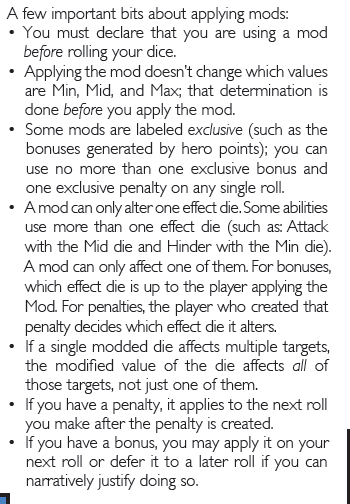
The most Sentinels of Multiverse thing of Sentinel Comics is how some interactions are just not fun. Sometimes, a combination of Environment, Villains, and Heroes just makes for strange interactions; these are often interesting surprises, but sometimes they can be boring. Like say, a weak Villain that gets stronger with the number of minions and can redirect attacks for Minions, Minions that are unusually good at surviving, and a team of Heroes that have problems attacking multiple targets; suddenly what should be a tense but easy fight becomes a test of patience.
There is no simple solution to this, other than avoiding over-planning. No matter how “balanced” an encounter, no matter how you think a scene will go, you will not have expected what will happen. So embrace chaos and trust GYRO.
This reminds me of another major hurdle with the GM-facing tech: its encounter and issue design guidelines make the process harder than it should be, and are mostly unhelpful; the problem comes down to this pretense of balance.
There are just too many interactions to account for, and the guidelines for the GM can lull you into spending too much time on prep. Instead, test things out, learn how your players work together, and slowly assemble your own personal toolkit between sessions.
The game does not do a good job teaching itself. It is an extremely good toolkit; it teaches you how to use each tool but not so much how to put an issue together (without overdoing it). This is usually something easily overcome by having example scenarios and adventures; unfortunately, the adventures of the Core rulebook are one of its weakest points. Both offerings have baffling design choices that make them unwieldy “tutorials”. Battle of the Bands has a single-player character or an NPC (!) take the spotlight and pitches you not against one, not against two, but *five* fully-stated Villains. A Conspiracy of Clones is a much more accessible adventure, but it is the typical body-snatcher scenario - not the best option for starting a campaign, when there are literally no characters you know, much less care about!
Even in all good fun, the choices for some rogues of the rogue’s gallery betray some sniffle Ideology.
LudoAs much as I like Challenges, the GYRO system, and how well they flow together, things are not always flawless. Sometimes a Twist cannot fit neatly, or a Villain advances a scene track too fast.
The most disruptive element has to be Doomsday Devices. They are… a bit too much. Part challenge, part enemy, part environment, they do so much and have their own turn in the round order. They are also capital B Big Deal and cannot be ignored.
For something that is a genre convention, using them is pretty cumbersome, and can detract from the climax of the Red zone of an action scene.
BradLudo hits all my major points above, I think that the game could definitely use a much stronger example of play. (It has several good examples of play about specific mechanics, but a general one would have been nice.) Speaking from direct experience, I wish I would have realized how much the game system intends for you to have access to Boost and Hinder Powers, to be totally honest when I built my first character, I didn’t take a single boost or hinder power. This was a mistake on my part.
My other complaint is that even as the game advertises itself as having a Silver Age Flavor, several of the villains have strong horror and violence elements more in common with the later grittier action characters of the ’90s. (Mecha-Stalin has a super-soldier sniper, who is totally erased from the U.S.S.R’s history.) It can create some tonal confusion, but the game can handle either fairly well.
8. What to Steal
Experiencing good art is the most important step in making good art. We look back at the things that worked and did not work about this game, see what we learned for design work, interesting tech and just a general overview of things that we will take from this game and bring into others. Or more honestly: since many of us may not play this game and we have it in our library, this way we can get some use out of it.
LudoThe hero generation methods are so cool! I love just making heroes, and it is disappointing that Villain customization is not so dynamic, but that’s what happens with asymmetrical design.
It offers another cool way to think about character creation. It also makes me wonder how well one could design a lifepath system for Sentinel Comics. I will think about this when designing for other games, and I would love to tinker with character creation; at least, to make it so the Medical background is not automatically better and more interesting than any other option.
BradI have played and run a ton of Superhero TTRPGS' in my time (in case you couldn’t tell from my comics rant), and Sentinel Comics is the first one that I have enjoyed random character generation for. In fact, all of the test characters from my test session agreed that it was outstanding. Any designer could learn a ton from it.
LudoPacing is one of the hardest things to design for; all too often, the tools for that are either strictly GM or player facing. Who are we kidding, definitely mostly GM-facing. Reading and playing Sentinel Comics may do well for any designer to rethink the relationship with a game and pacing.
The system is extremely versatile. It can do so much more than comic books stuff. A fantasy hack would write itself. With some tuning up, we could run tournament arcs, with the interactions between audience members, people commenting on previous fights, and flashbacks fully immersed in a scene. The way Power arrays are built could be excellent, dare I say it, allow for wild Stand battles.
I could make my home designing based on Sentinel Comics for years. However, that would not happen with a friendly license. As of the time of the review, the team has announced some kind of license to be in the future, but only after their current line of products has been launched. Since this will only happen by end of 2022, don’t expect a license anytime soon. This is ultimately the greatest chain dragging the potential of this game.





